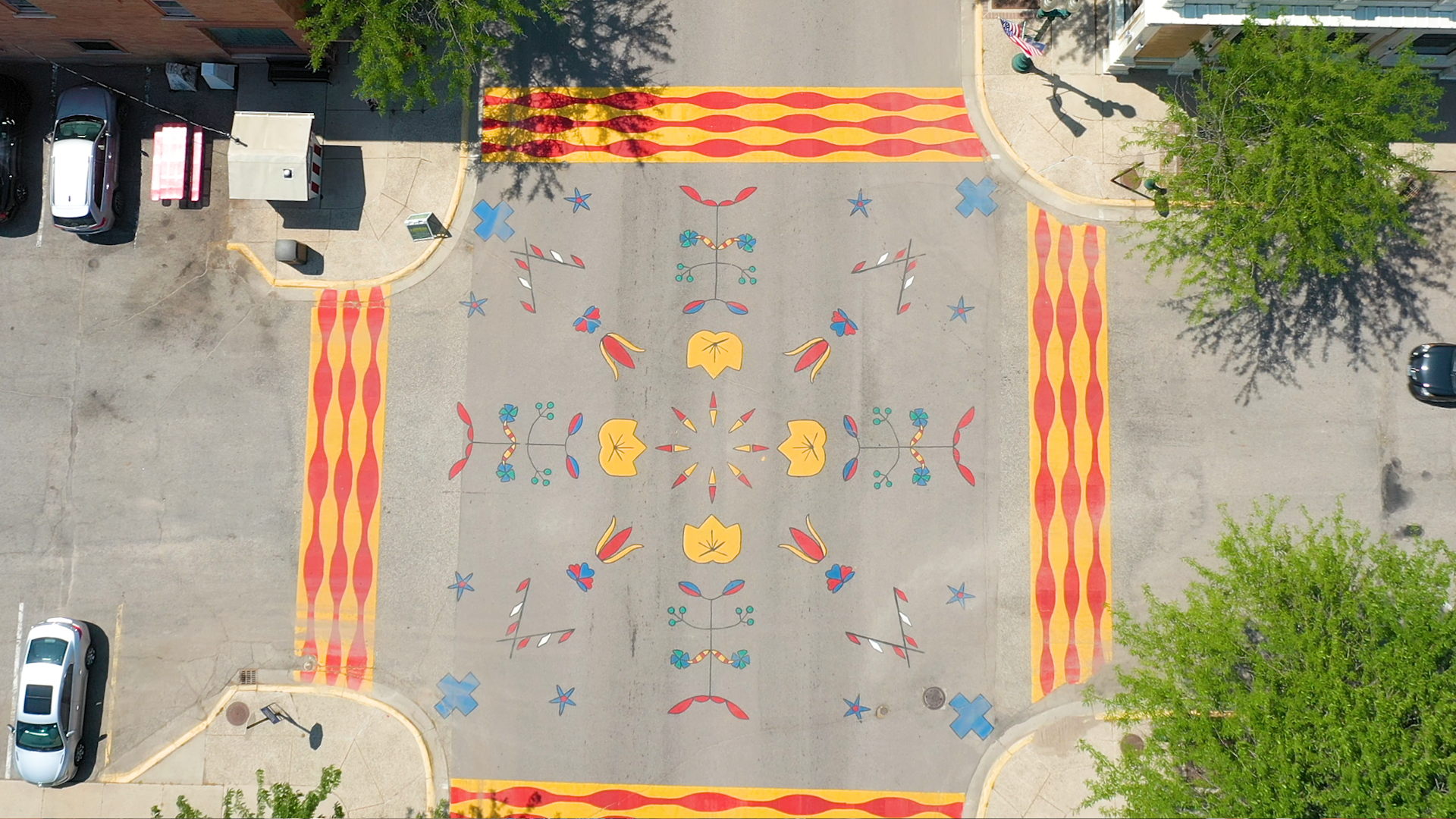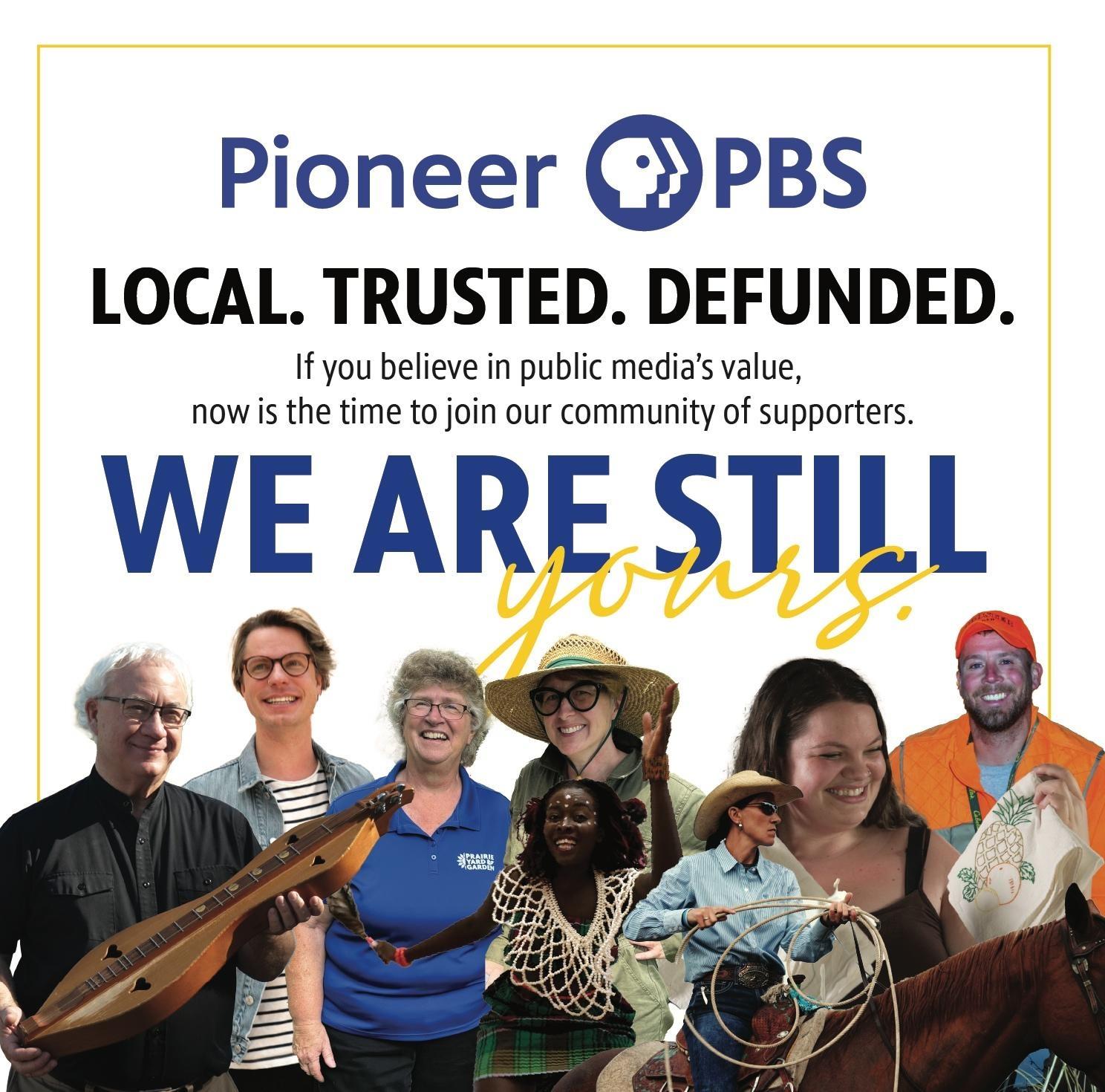So, the proposed one, maybe two, crosswalks turned into 18, turned into 20 and an open call for artists to paint the crosswalks went out. Prados said that applications were considered based on the strength of their design and their relationship to the area.
Jessica Gorman and Adam Pruess painted two crosswalks. One of them is called Circles of Life. "Life has this whimsy of circular things happening and some of it really vibrant and some are kind of dark and all the colors seem to blur together to make something beautiful in the end," explained Gorman. "So that's what we did here. We tried to capture the whimsy of life by taking all these bright, colorful, happy spirals and then some spirals that have more somber tones in them and working them all together into a crosswalk."
Their second crosswalk, located down Prentice Street on Sixth Avenue, is a nod to Granite Falls' cooperative legacy. Granite Falls is the home of Andrew Volstead who pushed the Capper-Volstead Act (commonly known as the cooperative act or the cooperative marketing law) in 1922. Gorman and Pruess painted a series of clasping hands in a gradient of color from yellow to orange to red to purple to blue, intended to represent a collaborative spirit they witness in Granite Falls. "What we discovered is we had very different visions of hands and then Adam came up with a way to make them very easily unified," said Gorman.
Prados said that the project also included the crosswalks around the schools "because there's a lot of traffic issues over there and public safety is really important, student safety, especially with all of the foot traffic and coming and going to school," she said. "And we thought it would be a really great way to create more relationships between the youth and those who are of a more professional ilk in the arts."
Other crosswalk designs feature floral themes and various types of aquatic life. There's a powerful piece calling attention to missing and murdered indigenous women and Autumn-Cavender Wilson's painting fills the entire intersection of Prentice Street and Seventh Avenue. Cavender-Wilson, who is a traditionally trained Dakota artist, said that she purposefully included historical elements in her design, but also elements that represent Dakota people's continued and future existence in this area.
"What I think is important is ... highlighting continued indigenous presence in the area, continued Dakota presence in the area and also to draw attention to the very real social and economic contributions that our people have been making to to small town life here in Granite Falls," she said. "Many of the businesses that have opened up downtown recently are at least partially Native owned or owned by folks of color and I think it's really important to to highlight that the future of rural places is young, it's brown, it's Native and that's an important thing to kind of bring to the forefront."
Another important piece for Cavender-Wilson is Dakota presence; the importance of Dakota art, Dakota history and Dakota people taking up space in places that historically have left Dakota people out. Cavender-Wilson talked about this during the Upper Sioux Community's Granite Falls Art Walk, a walk to honor the artists of this project and the first ever Upper Sioux hosted event in Granite Falls.
"One of the things that I've wanted to emphasize repeatedly over the course of the entire day is the ways in which Upper Sioux has repeatedly made space for itself within the town of Granite Falls and the surrounding area whether or not we were wanted, whether or not we ever got to be here, whether or not we were ever invited," Cavender-Wilson said to a crowed gather in front of her painting. "We have been here for 26 thousand years, we will be here for 26 thousand more, because this here, this represents our territory, it represents our homeland, it represents where we come from. Because here at the at the very heart this town, it's still our space."
A press release circulated by the Upper Sioux during the Art Walk recognized the historical tension between the Tribal nation and the city of Granite Falls because of injustices perpetrated against Dakota people in their ancestral homeland. It also said, "as we honor the collective artists of this project and highlight the economic impact of USC members who have created businesses in the town, we strive to form a new path forward. One of collaboration, recognition of sovereignty and mutual respect."
"And so this exists actually for every single one of you," Cavender-Wilson said. "This design out here is a is a floral chronicling of the history between Dakota people and non-Native people in this area, down from the yellow medicine plant, all the way to the maple sugar camps that were held here, to the two children who were murdered by eating apples. ... And so this is our space, always."
It's clear that this is much more than an art project. The crosswalks are meant to increase public safety, pedestrian, visibility, commerce and tourism, to beautify community gathering spaces and lift up local artists and to urge people to consider the past, present and future of the place.
This crosswalk project is ongoing. The artists are working on creating a walking arts and history map of Granite Falls, including the stories behind the crosswalks. There will be both digital and physical versions of the map with walking routes around town.




